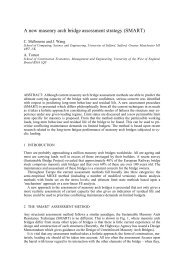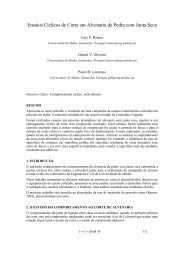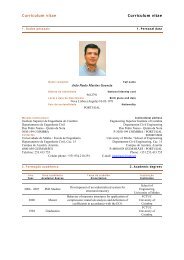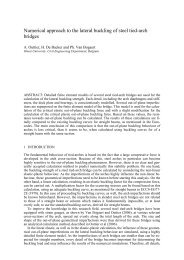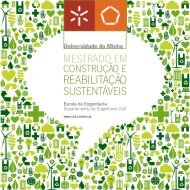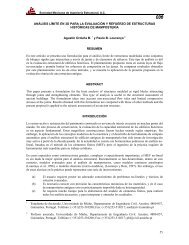Sustainable Construction A Life Cycle Approach in Engineering
Sustainable Construction A Life Cycle Approach in Engineering
Sustainable Construction A Life Cycle Approach in Engineering
Create successful ePaper yourself
Turn your PDF publications into a flip-book with our unique Google optimized e-Paper software.
2 MULTI-CRITERIA DECISION MAKING METHODS<br />
In this section a brief description of multi-criteria decision mak<strong>in</strong>g methods (MCDM) which are<br />
most commonly used <strong>in</strong> retrofitt<strong>in</strong>g, deconstruction and demolition of build<strong>in</strong>gs is presented .<br />
MCDM can be divided <strong>in</strong>to multi-objective decision mak<strong>in</strong>g (MODM) and multi-attribute<br />
decision mak<strong>in</strong>g (MADM) (Triantaphyllou, 2000). In the first case the decision space is cont<strong>in</strong>uous,<br />
as for example <strong>in</strong> mathematical programm<strong>in</strong>g problems with multiple objective functions,<br />
while <strong>in</strong> MADM the decision space is discrete.<br />
A multi-criteria decision problem consists of determ<strong>in</strong><strong>in</strong>g the optimal alternative A * among a<br />
set of solutions A i which are evaluated with respect to a set of criteria C j .<br />
Criteria can be expressed with different units of measure and may be qualitative or quantitative.<br />
As a consequence, the application of MCDM methods <strong>in</strong>volve the normalization of variables,<br />
the quantification of qualitative data and determ<strong>in</strong>ation of criteria weights. Criteria can<br />
be classified as benefit-type or cost-type, accord<strong>in</strong>g to the <strong>in</strong>terest of decision maker <strong>in</strong> maximiz<strong>in</strong>g<br />
or m<strong>in</strong>imiz<strong>in</strong>g their evaluation.<br />
In general, MCDM problems can be formulated <strong>in</strong> a matrix format. Let a ij be the performance<br />
of each alternative A i with respect to different criteria C j whose weights are w j . Weights are<br />
generally expressed <strong>in</strong> relative terms, that is<br />
<br />
w j j<br />
=1. The typical decision matrix is then:<br />
<br />
A<br />
<br />
m x n<br />
A<br />
A<br />
<br />
A<br />
1<br />
2<br />
m<br />
C C C C C<br />
1 2 3 4 n<br />
a a ... ... ... a<br />
<br />
<br />
a21<br />
<br />
<br />
am1<br />
a<br />
11 12 1n<br />
mn<br />
<br />
<br />
<br />
<br />
<br />
<br />
(1)<br />
Any decision-mak<strong>in</strong>g technique can be divided <strong>in</strong> three steps: l) Determ<strong>in</strong>ation of the relevant<br />
criteria and alternatives; 2) Attachment of numerical measures to the relative importance<br />
of the criteria and to the impacts of the alternatives on these criteria; 3) Process<strong>in</strong>g of numerical<br />
values to determ<strong>in</strong>e a rank<strong>in</strong>g of each alternative.<br />
In the follow<strong>in</strong>g, a brief description of most common MCDM methods and most used approaches<br />
<strong>in</strong> demolition, deconstruction and retrofitt<strong>in</strong>g of exist<strong>in</strong>g structures is reported. In particular,<br />
details on weighted sum model, weighted product model, analytic hierarchy process and<br />
TOPSIS method are provided. Concern<strong>in</strong>g other approaches as ELECTRE, MAUT, VIKOR<br />
and PROMETHEE methods the reader is referred to exist<strong>in</strong>g literature.<br />
The WSM and WPM methods<br />
In the weighted sum model (WSM) the best alternative is selected accord<strong>in</strong>g to the follow<strong>in</strong>g<br />
espression:<br />
n<br />
*<br />
WSM-score<br />
max<br />
i<br />
j1 <br />
ij j<br />
A a ×w for i=1,...., m.<br />
(2)<br />
In general, this method is suitable for s<strong>in</strong>gle-dimensional problems while <strong>in</strong> multidimensional<br />
cases difficulties occur. Moreover, <strong>in</strong>volv<strong>in</strong>g the maximization or m<strong>in</strong>imization of<br />
different performances, the WSM method is applicable to problems with criteria all of the same<br />
type, that is benefit or cost-type criteria, while it is clear that <strong>in</strong> some cases their value can conflict<br />
each other.<br />
The weighted product model (WPM) is similar to the WSM. Each alternative is compared<br />
with the others accord<strong>in</strong>g to the follow<strong>in</strong>g product:<br />
178


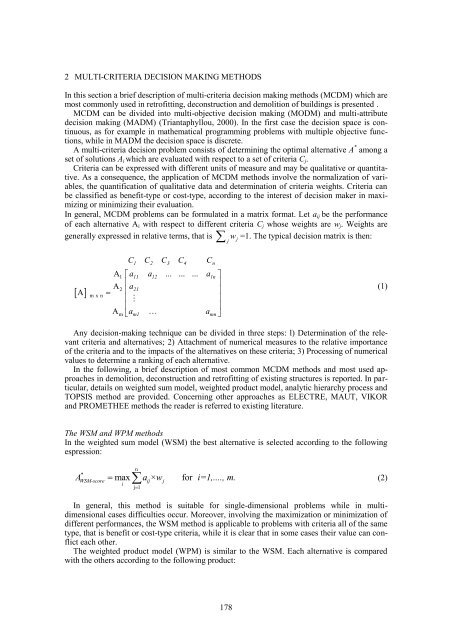
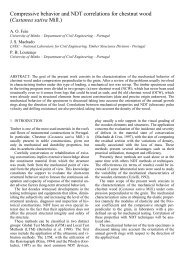
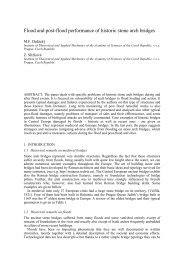
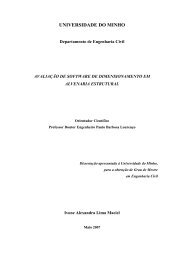
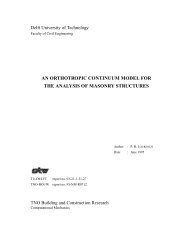

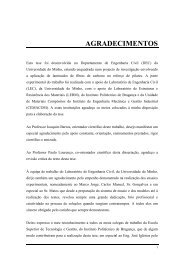

![Weibull [Compatibility Mode]](https://img.yumpu.com/48296360/1/190x134/weibull-compatibility-mode.jpg?quality=85)

